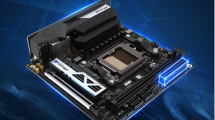The mining industry, and it really is a billion-dollar market by now, is supposed to be fed with new (old?) GPUs to help equalize the current, very tight market situation. This is exactly the news that hit the press yesterday. But it also raises questions, because the whole thing doesn’t seem quite so simple. Not technically, either. But I’ll get to that in a minute.
A blog post at NVIDIA, as well as a page on NVIDIA’s homepage that has since been made public, show exactly this path of replacement and lockout. NVIDIA’s statement reads quite tempting, at least at first glance:
We are gamers, through and through. Yet NVIDIA GPUs are programmable. And users are constantly discovering new applications for them, from weather simulation and gene sequencing to deep learning and robotics. Mining cryptocurrency is one of them. With the launch of GeForce RTX 3060 on Feb. 25, we’re taking an important step to help ensure GeForce GPUs end up in the hands of gamers. RTX 3060 software drivers are designed to detect specific attributes of the Ethereum cryptocurrency mining algorithm, and limit the hash rate, or cryptocurrency mining efficiency, by around 50 percent.
To address the specific needs of Ethereum mining, we’re announcing the NVIDIA CMP, or, Cryptocurrency Mining Processor, product line for professional mining. CMP products – which don’t do graphics – are sold through authorized partners and optimized for the best mining performance and efficiency. CMP lacks display outputs, enabling improved airflow while mining so they can be more densely packed. CMPs also have a lower peak core voltage and frequency, which improves mining power efficiency.
However, the GPUs presented by NVIDIA do not fit at all to the lineup of current amp cards and their capabilities. The GPUs listed in the following table of the manufacturer and the corresponding hash rates contradict a bit the possibilities of the current GPUs and probably only two conclusions can be drawn in the end. On the one hand, NVIDIA could do salvage action and sweep up everything that didn’t fit on graphics cards so far (and thus offer fewer cores and low clock rates), or on the other hand, which sounds more likely, they reactivate various older Turing bolides that are supposed to fix it and would fit much better based on the power consumption. The old node is clearly underutilized and you could very well go double track.
Industry sources spoke of a maximum of one Ampere card and three unspecified Turing chips to do the job for the miners now, with supposedly only the 30HX fitting the current Ampere lineup because it could probably use the leftovers from the upcoming RTX 3060. this in turn is reflected in the reported power consumption.
Many board partners, with exceptions, were also reportedly surprised by yesterday’s announcement. The listing “Available from authorized partners, including ASUS, Colorful, EVGA, Gigabyte, MSI, Palit, and PC Partner” is also quite interesting. PC Partner includes companies such as Zotac, Manli and Inno3D, the latter two in particular have been working intensively with the mining industry for a long time. Other big players like Palit or Galax were not even informed and learned about the new deal from the media (videocardz.com).
That there is now a little (probably also sour) surprise, is quite understandable, especially since I was told that Asus should already be fully in the implementation of the HX cards. These cards are to be delivered without video output and as bare boards to reduce effort and costs, according to the concurring information. A later further use in the consumer market is thus completely excluded. In general, favorable air and also water cooling solutions should have been considered for the racks, which should also be visible in the board layout.
This would allow you (as rumored) to drive the power supply via the PEG to virtually zero, and also generate the 3.3 volt rail directly from the 12 volt rail via a dedicated buck controller. This would then also reduce the cabling of the hooked-in cards to pure data lines, which would save further costs and also simplify the supply in general.
Software lock as a paper tiger?
The software lock announced by NVIDIA for the upcoming RTX 3060, on the other hand, raises questions, because without the implementation in the firmware and the consideration of a so-called hardware strap on the package, a pure driver limitation as a simple attachment is no hurdle at all for the billion-dollar mining industry, which in the meantime has even completely leveraged AMD’s Secure BIOS and knows how to elegantly circumvent all restrictions.
As long as the whole thing is not prevented in the chip, which is rather impossible, the hurdle for the casual miner is clearly raised, but the mining industry is spared (once again), which could react quite quickly with its own firmware. Such a BIOS can be “individualized” with some effort and the mining farms work longer with their own drivers and even BIOSes. In this case, the protection provided by the drivers is a small and rather low hurdle. NVIDIA’s intentions and offer are really commendable, but it really remains to be seen what will ultimately come of it in reality.

































Kommentieren